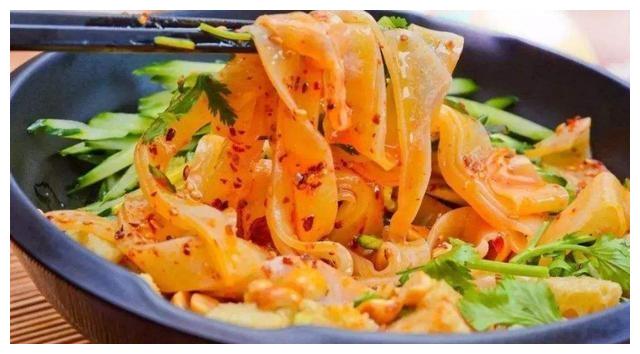When the vast steppes of Inner Mongolia are mentioned, images of its boundless, picturesque grasslands immediately spring to mind. Steeped in the rich history of ancient nomadic tribes, this land has countless tales handed down through generations, each leaving an indelible mark. Amidst this breathtaking landscape, the unique culinary delights of Mongolia stand out prominently. Immersing oneself in the natural beauty while savoring these local delicacies is an experience that introduces a distinctive charm. Today, let’s embark on a gastronomic journey across Inner Mongolia, tasting ten must-try local dishes that promise to tantalize your taste buds. Curious friends, come and indulge!
Roast Whole Lamb
Roast whole lamb is hailed as the supreme delicacy on Mongolian tables. Beloved by Genghis Khan, it was once a royal delicacy during the Yuan Dynasty feasts. Initially reserved for Mongolian nobility, this dish has now become a culinary gem of Inner Mongolian cuisine. Selected premium whole lamb is stuffed with unique seasonings and slowly roasted to achieve a golden, crispy exterior and aromatic, mouth-watering meat. Whether during festivals or gatherings, roast whole lamb remains a cherished and delicious symbol of Mongolian history and culture, drawing people into the enchanting world of Inner Mongolia.
Nai Pi Zi (Milk Skin)
Known in Mongolian as “Chagan Ide,” “Urummu,” or “Uzhmu,” nai pi zi translates to “white food” in Chinese. Made by slowly boiling fresh milk from horses, sheep, cows, or camels, it forms a fatty layer on the surface, which is then lifted with chopsticks and dried to produce nai pi zi. Rich in nutrients, this delicacy is a treasured part of dairy products, often paired with milk tea, nai guo zi, or fried rice. Its production might sound simple, but it requires a substantial amount of raw materials. Celebrated for its pure fragrance and rich nutrition, nai pi zi is an indispensable food whether for daily meals, banquets, or religious offerings, earning its reputation as the “essence of a hundred foods.”
Hand-pulled Lamb
This classic Inner Mongolian dish involves lamb that is specially treated and then torn into small pieces by hand. Tracing its origins back to ancient pastoral times, this method of tearing meat by hand instead of using a knife was found to enhance the flavor, eventually giving rise to this unique delicacy.
Shao Mai
Shao mai is a long-standing traditional pastry found in cities of western Inner Mongolia, classified under steamed buns. Resembling a flower in shape with thin skin and tender filling, it is similar in appearance to the southern Chinese dim sum, shaomai, but differs in filling. While southern shaomai uses a variety of ingredients, Inner Mongolian shaomai typically consists of beef or lamb mixed with scallions. Despite varying names such as “shaomai,” “shaomei,” or “shaomao,” this delectable dish remains distinct.

Wu Chuan You Mian (Wu Chuan Oat Noodles)
Named after Wu Chuan County, this traditional Inner Mongolian food made from oat flour boasts a rich nutty flavor and unique texture. Oats are ground into fine flour and then mixed with water to form a dough. The dough is kneaded, rolled out, and used to create various oat dishes such as noodles or steamed buns. Once cooked, these oat-based foods have a bright yellow color and a pleasantly chewy texture. Packed with proteins, fibers, and B vitamins, Wu Chuan You Mian is not only delicious but also highly nutritious, making it an essential part of the local diet.
Zhuo Zi Shan Smoked Chicken
Hailing from Zhuo Zi County in Ulanqab, Inner Mongolia, Zhuo Zi Shan smoked chicken has a century-old tradition and is one of China’s renowned chicken dishes. Famous across northern China, this large, plump, and tender chicken is distinguished by its vibrant red color and captivating aroma. The unique smoking technique involves using corn stalks and radish leaves to impart a distinctive flavor. Transported through major railways, Zhuo Zi Shan smoked chicken has gained nationwide fame, making it a culinary emblem of Ulanqab.
Bameng Stew
A popular traditional dish from western Inner Mongolia, Bameng stew is especially favored during the cold, dry winters. Its appeal lies in the rich, hearty broth where ingredients like vegetables, meats, and tofu absorb the flavors of a medley of spices and seasonings. The resulting stew is aromatic and flavorful, providing both warmth and nourishment in the chill winter months. Travelers from all regions are often enchanted by this dish, which captures the essence of western Inner Mongolian food culture.

Grassland Lamb Hot Pot
Inner Mongolia’s grasslands produce high-quality lamb, perfect for the beloved lamb hot pot. The broth is typically made from beef bones, rendering a fragrant base. Thinly sliced lamb and fresh vegetables are cooked in the hot pot and enjoyed with dipping sauces, creating a meal that is both flavorful and nutritious.
Inner Mongolian Baked Buns
A unique treat of Inner Mongolia, these baked buns feature a crispy golden exterior and a juicy lamb filling. Made from premium flour and filled with spiced lamb, they are baked to perfection, making each bite a delightful experience.
Milk Tea
One of Inner Mongolia’s signature drinks, milk tea is made by boiling tea bricks, straining the leaves, and mixing the tea with fresh milk. This tea is characterized by a rich, salty flavor with hints of sweetness. When enjoyed in traditional tea houses, it is often paired with butter, fried millet, milk skin, milk tofu, jerky, and other snacks, each enhancing the tea experience. For those unaccustomed to its taste, it can be served as an accompaniment to meals.
These ten iconic dishes epitomize the culinary richness of Inner Mongolia, showcasing its unique flavors and abundant grassland ingredients. If intrigued by these culinary treasures, do give them a try and immerse yourself in the food culture of Inner Mongolia. Feel free to share your thoughts and love for Inner Mongolian cuisine in the comments below!

